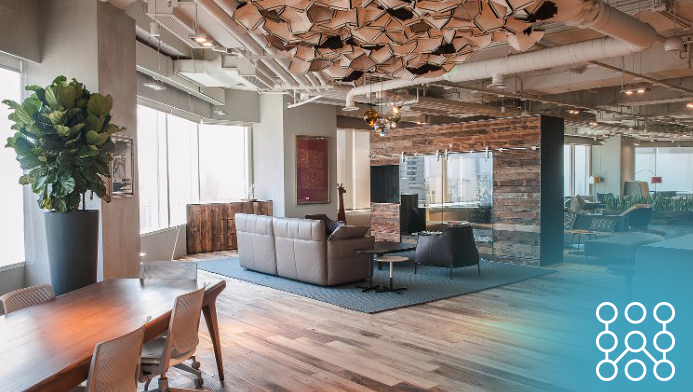WELL Story: Air at Haworth Kerry Center, Shanghai
by Alex Przybyla, Sustainability Manager, Haworth

Originally published on WELL Certified
The air we breathe can have a profound effect on our health, wellness and productivity. Air pollution is a growing concern across the world, and as a result it is more important than ever to ensure that our indoor air quality is optimized to support human health. We sat down with the project team that worked on the WELL Certified Haworth Kerry Center in Shanghai to discuss how they implemented design and construction strategies to address the WELL Air concept.
1. Why is the Haworth Kerry Center called an ‘Organic Office & Showroom’?
“Organic spaces” are how we refer to environments that live, grow, and evolve with humans. Naturally, that growth should be as healthy as possible. Sustainable, healthy spaces are a key part of the organic workspace ethos here at Haworth.
2. Haworth Kerry Center is one of the projects that piloted the WELL Building Standard in Asia-Pacific. What made you get involved in the WELL building movement?
What’s been intriguing to many of us right from the start is WELL’s emphasis on the individual building occupant. A lot of green and sustainability certifications are either about the building overall or very specifically about each piece of furniture, each sofa or coffee table. As great and necessary as those sorts of standards are, they don’t focus on the most important aspect of any space: the individuals who are inside it, working and breathing and creating. We design furniture, architects design buildings and interior designers design spaces for the people, and WELL reflects that by making people the priority.
3. Can you talk about the Air concept features that were achieved by this project?
The first one to jump out at me would be Feature 4, which looks at VOC emissions from furniture. This is an area in which we’re constantly trying to improve from a material selection standpoint. Especially in soft seating (such as sofas), the market is generally not using materials that meet leading standards like Greenguard. WELL looks at this closely, and in a sense it is a nice validation of the often invisible behind-the-scenes work we’ve done in material selection.
The other feature I’d highlight would be the active air monitoring. The screens showing the space’s air quality is a highlight area whenever we have guests. It’s fantastic to be able to show the low PM2.5 count in our space, because everyone living in China is hyper-aware of it. Real time monitoring of TVOC is nice as well, as it helps to show first-hand the high quality of the materials in our furniture. The humidity, CO2 and temperature are also displayed for anyone who’s curious, but the PM2.5 and the TVOC are definitely the main points of attention.
4. The project has achieved RESET certification as well. Can you talk a little about the RESET certification and what it takes to achieve this?
RESET certification focuses on five metrics of indoor air quality: PM2.5, TVOC, CO2, temperature and humidity. To meet RESET’s metrics, we need to be actively monitoring indoor air quality, so that we can’t just measure the space right when we move in and then throw a bunch of products in there which we know won’t pass. The real-time monitoring and publishing of data is absolutely key. First, it guarantees transparency, and second, it ensures that we don’t say a space is healthy 365 days of the year just because it is healthy on the 2 days we test.
5. How did the project work with the RESET and WELL Certification in parallel?
RESET and WELL have the same goal for workspaces: ensuring healthy air for the individuals working in the space. Working toward both certifications was natural. It helps us in Shanghai that RESET has a very strong presence here and is constantly training more people to be RESET certified. Their strong focus on air, which again, is something people in China are hypersensitive to, opens the door to talk about health from a more holistic point of view and easily merges into a conversation about WELL. RESET’s emphasis on real time monitoring and display helps keep the emphasis on health visible and tangible as people work in the space and host clients or guests.

